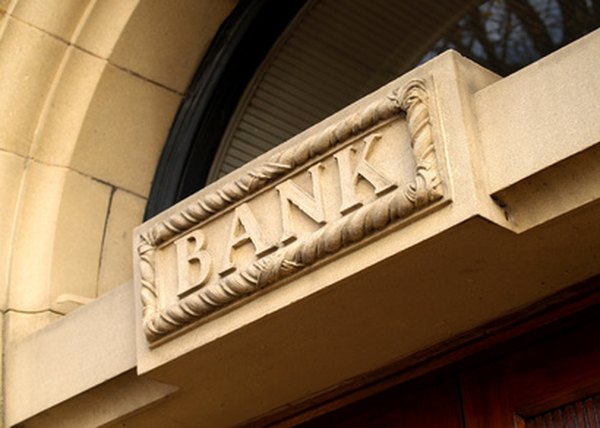What Is the Difference Between a Commercial Bank and a Savings & Loan Bank?
Just because the sign says "bank" doesn't mean it's not an S&L.
bank image by Pefkos from Fotolia.com
In the United States, commercial banks and “thrifts”-- savings banks or savings and loan associations—co-exist side by side. Over time, the lines have blurred dramatically. Bottom line: Savings and loans were instituted primarily to underwrite home loans and offer consumers a place to save. The purpose of commercial banks, according to Connecticut’s Department of Banking, is to act as “the traditional 'department store’ of the financial services world,” offering a smorgasbord of products to meet the needs of businesses and families.
Different Histories
Savings and loans were founded to underwrite mortgage loans and provide consumer savings accounts. Scandal threatened the industry in the 1980s and 1990s, when 747 thrifts failed as a result of mismanagement. Banks were set up as businesses devoted to serving the needs of commerce, to extend consumer and commercial credit and to administer a broader range of financial services and products. Before contemporary times, nobody would have thought to go to a commercial bank for a home loan.
Different Charters
The federal government or a state government can issue a commercial bank charter. It’s up to the bank’s stockholders to decide which one is most appropriate for its needs and growth plans. National banks receive charters from the Office of the Comptroller of the Currency, a division of the U.S. Treasury. If a commercial bank decides to trade a state charter for a federal one, it’s perfectly acceptable. Savings and loan charters also can originate at the national or state level. Either the federal Office of Thrift Supervision or a state government’s financial regulatory division issues S&L charters.
Ownership Differences
Two ownership options are available to entrepreneurs seeking to launch a chartered savings and loan association: A consortium of shareholders controlling stock issued by the S&L’s charter can establish a thrift, or the owners of the new institution can be its depositors and borrowers. This type of ownership model is referred to as a mutual ownership. Banks, on the other hand, are national, regional or community for-profit businesses owned and managed by a board of directors picked by stockholders. Thus depositors and borrowers can’t own a commercial bank.
Differences by the Numbers
“By law, thrifts may lend up to 20 percent of their assets to commercial loans, and only half of that can be used on small-business loans,” Bargaineering.com’s Jim Wang wrote in explaining the subtle differences between banks and S&Ls. To obtain Federal Home Loan Bank borrowing approvals, an S&L must meet a "qualified thrift lender test" and prove that 65 percent of its assets are invested in mortgages and consumer-related assets. Commercial banks have no such restrictions. According to the U.S. League of Savings Institutions, “The core expertise of savings institutions is home loans, while the core activity of commercial banks is business and commercial loans.”
Differences Converge
Congress began to knock down the barriers separating commercial banks from savings and loans in 1989. “Since then, much of the S&L industry has been absorbed into the broader banking industry,” wrote economics expert Bert Ely. According to his research, statutory and regulatory changes have nearly eliminated differences between the two. Further, both now operate under the same regulatory bodies. Some of the nation’s largest thrifts are even owned by commercial bank holding companies. Ely believes that S&Ls will disappear eventually: “Whether or not S&Ls do disappear is no longer a public-policy concern because they now are so similar to banks.” Said David Hochstetler of West Palm Beach’s Fidelity Federal Savings Bank’s: “We’re in the commercial banking field now.”
References
- Connecticut Department of Banking; ABC's of Banking; LESSON TWO: Banks, Thrifts, and Credit Unions - What's the Difference?
- Wisconsin Department of Financial Institutions: Differences between Banks, Credit Unions and Savings Institutions
- Library of Economics and Liberty; THE CONCISE ENCYCLOPEDIA OF ECONOMICS; Savings and Loan Crisis
Writer Bio
Based in Chicago, Gail Cohen has been a professional writer for more than 30 years. She has authored and co-authored 14 books and penned hundreds of articles in consumer and trade publications, including the Illinois-based "Daily Herald" newspaper. Her newest book, "The Christmas Quilt," was published in December 2011.

